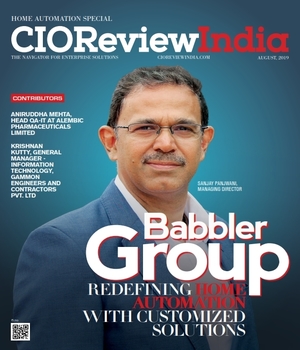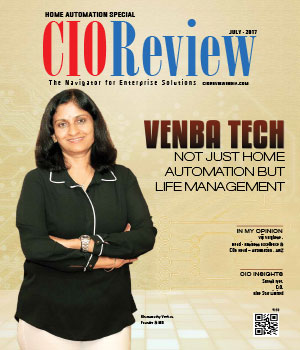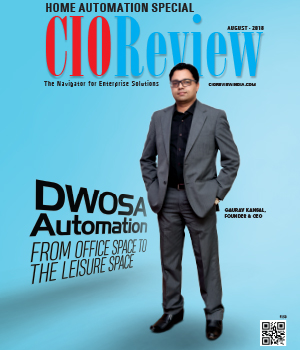
Empowering Mobile Network Operators With Wireless Technology
Christos Karmis, President & CEO, Mobilitie
 The insatiable demand for wireless services has driven a corresponding evolution in wireless technology platforms to meet that demand and provide wireless solutions that deliver higher throughput, lower latency, and improved reliability and security. As those technologies evolve, so too do the Mobile Network Operators (MNOs) and the enterprises they serve. As a premier provider of inbuilding wireless solutions, Mobilitie has also had to anticipate and adapt to a changing technology and business landscape, staying in front of the evolving plans and preferences of the MNO partners that we serve and their customers.
The insatiable demand for wireless services has driven a corresponding evolution in wireless technology platforms to meet that demand and provide wireless solutions that deliver higher throughput, lower latency, and improved reliability and security. As those technologies evolve, so too do the Mobile Network Operators (MNOs) and the enterprises they serve. As a premier provider of inbuilding wireless solutions, Mobilitie has also had to anticipate and adapt to a changing technology and business landscape, staying in front of the evolving plans and preferences of the MNO partners that we serve and their customers.
Mobilitie has long been a leading provider of traditional neutral host Distributed Antenna System (DAS) solutions for large venues such as stadiums, arenas, casinos, and transportation hubs. The emergence of low-power, fiber-to-the-edge DAS platforms have allowed Mobilitie to take advantage of fiber and power backbone synergies to deploy converged wireless solutions with Wi-Fi and other unlicensed spectrum platforms. These traditional platforms provide the robust, scalable capacity, and coverage that MNOs have demanded. However, the cost of these systems, along with the emergence of new technology, have driven the demand for alternative solutions, particularly in venues that aren’t necessarily the highest trafficked venues in a particular market, but still have wireless coverage or capacity issues.
One of the alternative solutions that have gained much traction with the MNOs has been Distributed Radio Access Networks (DRAN), in which the MNO’s Radio Heads, as the RF source, are distributed throughout a venue. Mobilitie provides fiber and power aggregation points that the MNOs can use to plug small cells or other Remote Radio Heads into a passive RF distribution network. A variation on this solution is Centralized RAN (CRAN). CRAN is similar to DRAN with the exception being the baseband units that control the Radio Heads are located in an offsite, centralized location that can serve multiple venues. In addition to lower costs, DRAN solutions also provide increased simplicity, control, and visibility to the MNOs, making it their preferred solution in many cases.
As LTE continues along its evolutionary path towards 5G, new wireless supplements such as Licensed Assisted Access (LAA) and LTE-LWAN Aggregation (LWA) are being utilized. LAA and LWA both augment a MNO’s licensed spectrum by utilizing unlicensed 5GHz spectrum in the Wi-Fi band to provide additional capacity and higher data throughput. As with DRAN solutions, LAA and LWA provide promising options for the MNOs but venues may be less receptive due to the potential impact on their own Wi-Fi networks. Mobilitie must perform a careful evaluation of these various options for each venue and manage the sometimes delicate balance between meeting the MNO’s technology preferences and the venues’ desire for unobtrusive installations that do not adversely impact any of their existing wireless systems. The industry continues to evolve and the next big step in that evolution is the emergence of Citizen’s Broadband Radio Service (CBRS). The FCC has allocated 150 MHz of spectrum, previously used by the U.S. Navy, in the 3.5 GHz band. CBRS offers a host of new opportunities for Mobilitie and provides a path towards business and technical models that feature shared RAN and shared spectrum, reducing the cost and level of complexity to deploy in-building wireless services. CBRS also opens new opportunities for wireless solutions in venues that have historically been difficult to deploy in-building systems in due to high costs or lack of MNO prioritization.
Mobilitie is perpetually evaluating the impact of these emerging technologies and anticipating how they will change the needs of our clients, namely the venues we serve, and our MNO partners. For the venues; Internet of Things (IoT) and industrial automation services are rapidly gaining traction and enhancing the need for robust WiFi and LTE services. Venues also continue to demand solutions that will attract the MNOs to underserved verticals such as hospitals, factories, and commercial real estate. The MNOs are in the midst of their own migration to 5G services in pursuit of 1 Gbps data speeds, and Mobilitie must be in a position to facilitate that migration by providing the MNO's with the ability to easily deploy new technologies and spectrum bands. That will include expanded antenna beam capabilities, virtualizing the RAN and the adoption of unlicensed spectrum platforms such as CBRS to reduce the costs and resources need to deploy in-building wireless services. Mobilitie has a long history of evaluating industry trends and anticipating their impact. The rapidly changing technology landscape of today only reinforces our commitment to evolving to meet our clients’ needs.
CIO Viewpoint
Upcoming Technological Advancements in Payments...
By Pinak Chakraborty, CIO of Airtel Payments Bank
Shaping the Future of AI: Talent, Innovation,...
By Yann LeCun, Chief AI Scientist at Meta
Future of Smart Manufacturing: Integrating Tech...
By Mohammed Kaishulla, Chief information officer, EPACK Durable
CXO Insights
Home Owners Can Look Forward To Futuristic Home...
By Avnish Mehta, Director - Digital Transformation at CollaberaInc
Empowering Mobile Network Operators With...
By Christos Karmis, President & CEO, Mobilitie
Smart Homes: Changing The Way We Live








